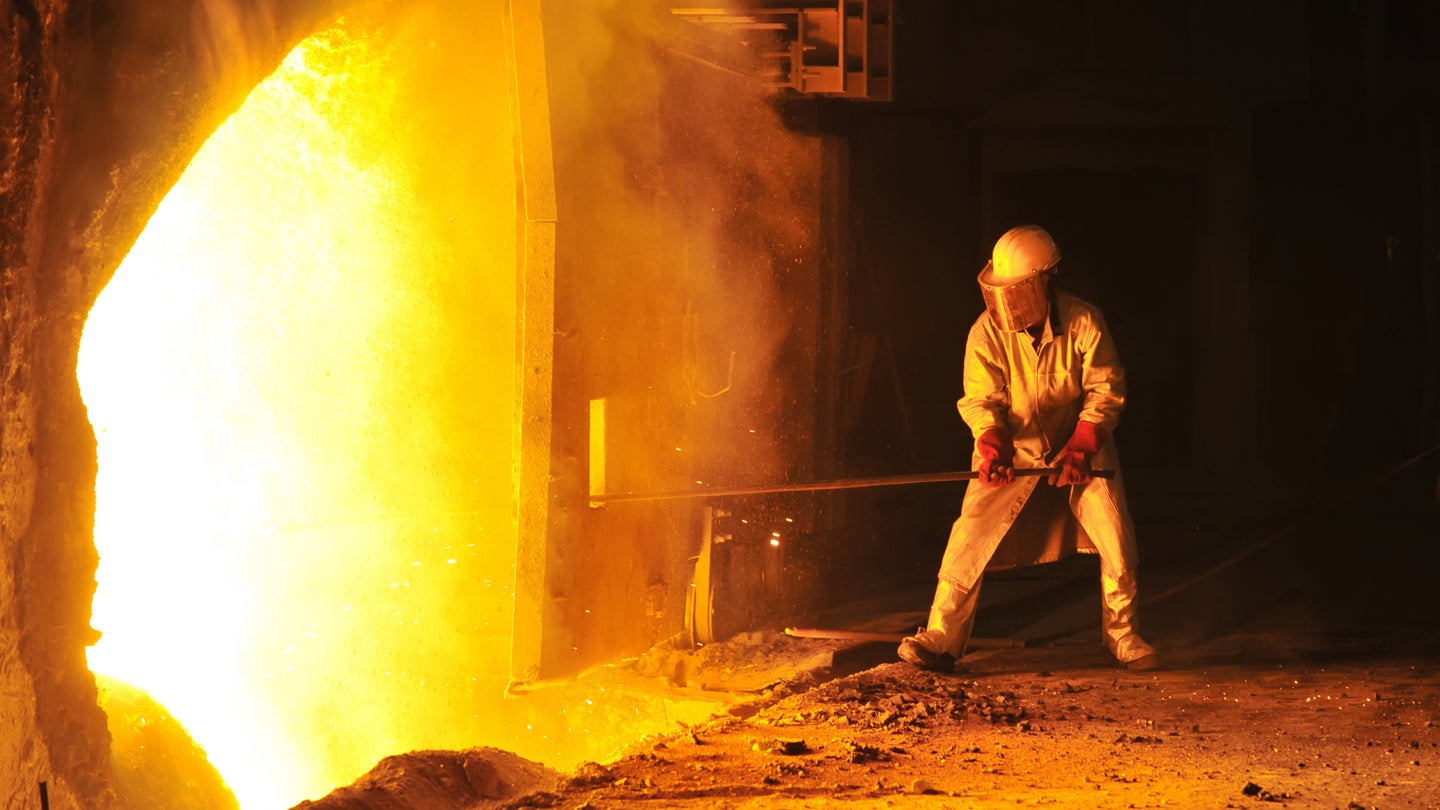
Researchers at the University of Birmingham have laid out a new, closed loop retrofit for industrial iron and steel furnaces that could reduce their overall greenhouse gas emissions by nearly 90 percent. If successfully implemented, the novel approach could be a gamechanger for some of the world’s most pesky polluters.
Steelmaking is one of modern society’s literal building blocks, but it comes at steep environmental costs—today, the iron and steel industries compose nearly 10 percent of all global greenhouse gas emissions. The issues stem from traditional blast furnace operations, which requires distilling coal in coke ovens which eventually produce carbon monoxide. Once the coke interacts with iron ore in the furnace, its resultant “top gas” composed mainly of CO, CO2, and N2 is then burned to raise its air blast temperature as high as 1350C, with leftover pollutants released into the outside air.
[Related: The next generation of US nuclear plants could be tiny but powerful
Currently, the vast majority of plans for decarbonising the sector require phasing out existing steel and iron furnaces for renewable energy-powered electric arc facilities, or EAFs. Unfortunately, EAFs can cost billions of dollars to construct, making them an unlikely candidate for large-scale adoption in the timeframe necessary to stave off the worst of our climate crises.
As highlighted in their recent paper published in the Journal of Cleaner Production, however, the team at the University of Birmingham was able to capture CO2 from traditional furnaces’ top gas and reduce it to carbon monoxide and oxygen using a “perovskite” material made of a crystalline mineral latticework. The perovskite requires much lower temperatures to facilitate the chemical reactions which can be generated by either renewable energy sources, or even heat exchangers simply connected to the furnaces. Both the carbon monoxide and oxygen is then fed back into the furnace where needed in the steelmaking process to form a nearly perfect closed loop system.
[Related: Mexico bans solar geoengineering tests after US startup’s unsanctioned ‘science project’.]
According to researchers, if their method is implemented in the UK’s two remaining blast furnace plants, it could save over $1.5 billion within 5 years while reducing the country’s overall emissions by nearly 3 percent. Extrapolate that to the global steel and iron industries, and it’s easy to imagine how this could provide a huge boost towards our transition towards greener infrastructure.
The post New factory retrofit could reduce a steel plant’s carbon emissions by 90 percent appeared first on Popular Science.
Articles may contain affiliate links which enable us to share in the revenue of any purchases made.
from Popular Science https://ift.tt/e8MPCA6




0 Comments